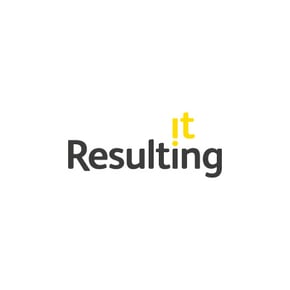
This is part of our SAP success report. You can download the full report here.
Uncovering the factors that drive success for SAP and S/4HANA customers
Over the last 20+ years, major organisations around the world have been implementing SAP to transform and ultimately run their businesses better. And that cycle continues today with the release of SAP S/4HANA.
But despite thousands of implementations and millions spent, we still hear of reports of SAP user frustration and varying degrees of implementation success.
Despite the clear evolution of the SAP solution over the past two decades, why are implementations still faltering 20 years on?
Only 48% felt that their SAP investment achieved its business objectives; would you board a flight if the chance of “success” had these odds?
Now - thanks to a research project led by Dr Derek Prior, Former SAP research director at Gartner - we can tell you the 7 key areas you must get right to massively increase your chance of success with SAP S/4HANA.
7. Strong project management
Programme management really is the SAP hot seat. It’s vital that the people in this role are experienced and have done it before. That said, you shouldn’t simply rely on your Systems Integrator to lead.
It’s important that you commit business-side people or experienced independents who can drive the programme as a business transformation and not simply an IT implementation.
Viewing your SAP investment as a long-term journey rather than a rush to go-live is a sign of a rounded, mature SAP programme manager. They’ll have one eye on successful implementation but another focused on the business case and long term deployment.
Only 34% of programme managers thought that the last SAP programme they worked on was supported by strong programme management.
6. Embedded business case
Nothing is more important than achieving the business case. Ultimately, it is the only measure of SAP success. Too many SAP programmes lose sight of their business case and the measurable process improvements that drive success.
Work hard early to create a robust business case for your SAP programmes with clear assumptions, and metrics with a stated level of baseline performance. And keep it visible through the programme and beyond.
You should be able to stop anybody on your SAP programme and ask the question “What principles is our business case built on?”. If they can’t answer simply and quickly, they shouldn’t be there.
“Too often the business case gets left on a shelf after it gets accepted”- Industry analyst.
5. Savvy vendor management
Your Systems Integrator has done this many times before. They know the script.
But it’s unlikely that your people have the same level of experience with the SAP solution or the extent of business change you’ll go through. So your SI needs to help you along rather than “do it to you”.
Select an SI based on cultural fit and evidence of working with companies like yours before. Next, get the SI relationship and vendor management right with strong, fair management.
Make sure they understand that it’s your SAP system and your business. Their role is to advise and implement. But you have to live with the system for many years to come.
Only 35% said the SAP was delivered successfully with the support of a suitable Systems Integrator with a strong cultural fit.
4. Connected strategy
Connecting your SAP programmes and ongoing SAP roadmap with your strategy is crucial.
Execs will make this link. But don’t assume that everyone will. The further down the chain people are, the less likely they are to join the dots between their role and your business strategy.
It’s classic Hoshin Kanri but it’s amazing how the simple notion of linking everybody’s effort with strategy is often overlooked – especially on something so strategically important.
50% of all respondents felt the SAP project was not connected to their business strategy.
Confused about connecting your ERP to your business strategy? This will help.
3. Confident sponsorship
Too many businesses treat SAP programmes as IT projects. You must resist this at all costs.
Your Execs need to be clear and consistent in the way that your SAP programmes are sponsored. But more important, they need to be visible and congruent too.
Half-hearted town hall meetings or occasional hokey floor walking just won’t cut it. Get interested, get involved and get into the detail. Take an interest and take action.
45% felt that the exec team did not provide confident sponsorship and support throughout their SAP programme.
Get the full breakdown when you download the SAP Success Report.
2. Solution standardization
With SAP, you’re essentially buying a big box of best practice business processes that have been refined by the best German engineers over decades and tweaked for your industry.
If you think that your home-spun processes are better because you’ve always done things this way, SAP might not be the best choice.
Some processes are important to your competitive advantage or operational effectiveness. But most are pretty stock in reality. Standardise on commodity processes and customise for the critical ones that matter.
The level of complexity, cost and pain involved in going non-standard with SAP is huge. And our findings show just how impactful standardisation can be.
Less than 50% believed they had used the programme as an opportunity to standardize.
But when is it right to customise SAP?
1. High adoption focus
All things being equal, if you’re looking to achieve real business results from your SAP system, adoption is the only thing that matters.
If business people don’t fall in love with the tools they use to do their jobs, how can you expect them to work in a new way that drives fundamental business change?
The swing on this success lever compared to the rest is nothing short of phenomenal.
45% said there was insufficient focus on business adoption.
With an increased density of technology natives in the workforce, people just won’t accept the same old clumsy systems they did 10 years ago. Things have moved on and your business systems need to be as easy to adopt as iPhones, Facebook and Instagram are.











